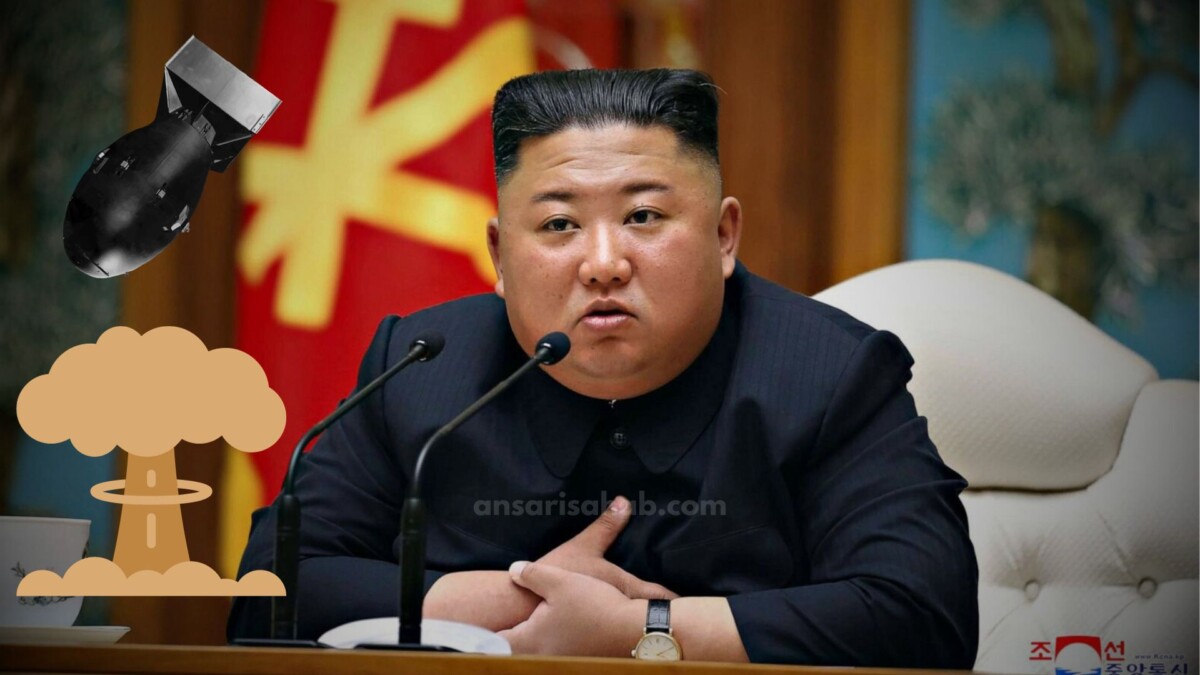
The new year has dawned on the Korean Peninsula with a chilling echo of drums and the glint of sharpened blades. In a series of bellicose pronouncements, North Korean leader Kim Jong-un has upped the ante in his standoff with the United States and South Korea, raising the specter of armed conflict and sending shivers down spines across the region and beyond.
Kim’s New Year’s address, delivered on January 1st, 2024, was a masterclass in brinkmanship. He declared that North Korea would “further strengthen its self-defense capabilities” by developing “more advanced offensive weapons, including multiple warheads, hypersonic missiles, and underwater nuclear operational vehicles.” This stark declaration was coupled with a chilling directive to the North Korean military to “prepare for war” and “thoroughly annihilate” any enemy that dares to provoke the regime.
These are not idle threats. North Korea has conducted over 100 missile tests in 2022 alone, showcasing its growing arsenal and defying international condemnation. In October 2023, the regime successfully test-fired an intercontinental ballistic missile (ICBM) capable of reaching the United States mainland, marking a significant milestone in its nuclear weapons program.
Analysts warn that Kim’s latest pronouncements signal a shift in North Korea’s strategy. From seeking concessions through diplomacy, the regime appears to be adopting a more assertive posture, aiming to leverage its military might to extract favorable terms from the international community. This strategy carries immense risks, as it increases the chances of miscalculation and a potential spiral into armed conflict.
A Saber-Rattling Symphony:
Kim’s recent pronouncements have been a masterclass in saber-rattling. In a New Year’s Day address, he declared that North Korea’s nuclear weapons are no longer “a deterrent but a warfighting tool,” a chilling shift in the country’s previously stated position. He went on to order his military to “thoroughly annihilate” South Korea and the US if provoked, a threat that has sent shockwaves through the region. This bellicose rhetoric was further amplified by a series of military drills conducted over the past month, with North Korea launching ballistic missiles and demonstrating its advancements in weapons technology.
Motivations and Miscalculations:
Several factors appear to be driving Kim’s current belligerence. First, there’s the perceived failure of diplomacy. The 2018-19 summits between Kim and then-US President Donald Trump yielded no concrete results, leaving Pyongyang frustrated and feeling disrespected. Second, North Korea’s internal economic woes, exacerbated by sanctions and the pandemic, may be pushing Kim to seek external distractions and shore up his domestic legitimacy through displays of military might. Finally, Kim’s recent emphasis on “preemptive strike” capabilities could be a dangerous attempt to deter potential US aggression, but it also risks lowering the threshold for conflict and plunging the region into a catastrophic spiral.
The Looming Shadow of War:
The potential consequences of Kim’s new year’s offensive are dire. A miscalculation or inadvertent provocation could spark a conflict with devastating consequences. Even a limited exchange of fire could spiral into a full-scale war, with millions of lives at stake.
The human cost of such a conflict would be immense. Seoul, a megacity of over 25 million people, lies within artillery range of the North Korean border. Even a limited bombardment could cause widespread casualties and cripple the South Korean economy.
Suggested: A Chilling Escape: Over 100 Rescued from Detached Ice Floe on Minnesota Upper red Lake
The Diplomatic Impasse:
The international community, particularly the United States and its allies, are struggling to find a way to de-escalate the situation. Years of failed diplomatic efforts have left few avenues for dialogue, and the imposition of sanctions has only served to further isolate North Korea.
The Biden administration has reiterated its commitment to “complete denuclearization” of the Korean peninsula, but it remains unclear what concrete steps it is willing to take to achieve this goal. Meanwhile, South Korea finds itself caught in the crosshairs, forced to balance the need for appeasement with the imperative of defending itself against a potentially imminent attack.
A Path Forward: Diplomacy or Brinkmanship?
The international community now faces a crucial dilemma. How should it respond to Kim’s latest provocations? The path forward is fraught with challenges, but there are some potential avenues to explore:
- Renewed Diplomacy: Despite the setbacks, diplomacy remains the only viable long-term solution to the Korean crisis. The international community must make a concerted effort to restart negotiations with North Korea, offering incentives for denuclearization while addressing the regime’s security concerns.
- Strengthening Deterrence: While diplomacy is paramount, it must be backed by credible deterrence. The United States and South Korea must maintain a robust military presence in the region to convince Pyongyang that the costs of aggression would be too high.
- Addressing Underlying Issues: The roots of the Korean conflict lie not just in military might but also in economic disparities and historical grievances. Addressing these underlying issues, such as promoting economic development and reconciliation between the two Koreas, is crucial for long-term stability.
Conclusion:
The Korean Peninsula stands on a razor’s edge. Kim Jong-un’s recent actions have pushed the region to the brink of armed conflict, with the shadow of nuclear war looming large. The international community must tread carefully, employing a mix of deterrence and diplomacy to de-escalate the situation and prevent a catastrophic misstep. The future of the Korean Peninsula, and potentially the world, hangs in the balance.
This blog post has only scratched the surface of this complex and multifaceted issue. There are countless other factors to consider, from the historical context of the Korean War to the role of regional players like China and Russia. However, by understanding the motivations behind Kim’s actions, the potential consequences of his rhetoric, and the precarious state of US-North Korea relations, we can hopefully work towards a peaceful resolution and prevent the Korean Peninsula from becoming the flashpoint for a global catastrophe.
It’s important to note that the situation on the Korean Peninsula is constantly evolving, and this blog post represents a snapshot of the situation as of January 1, 2024. It’s crucial to stay informed about the latest developments and to engage in critical discussions about this pressing issue.








